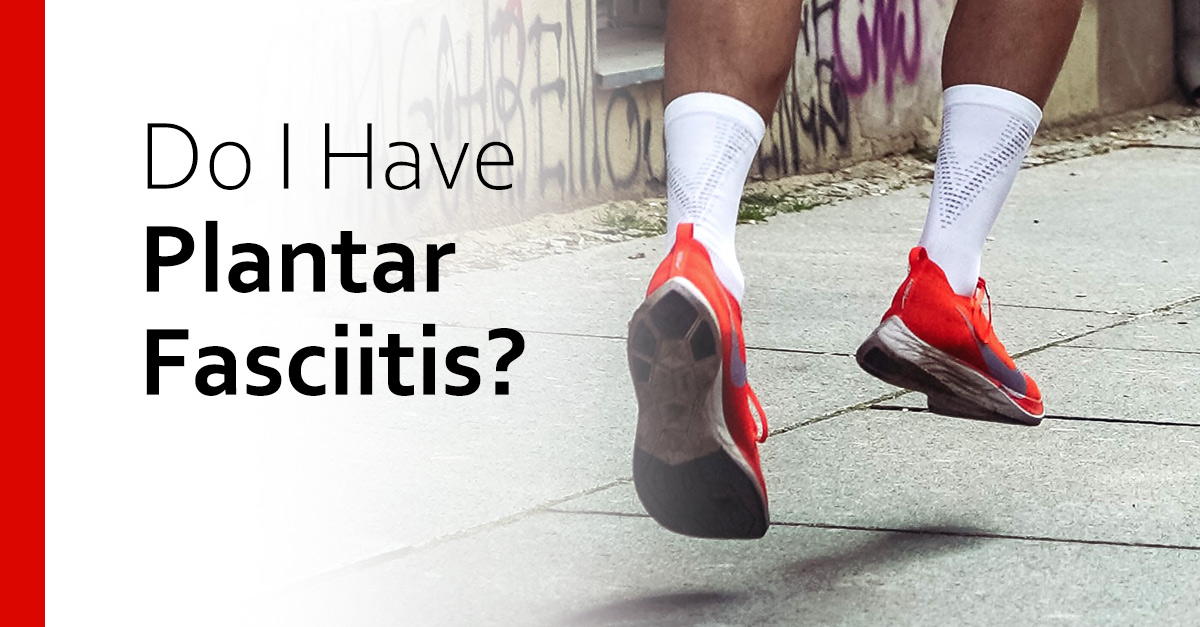You’re running your favorite route. Your favorite running playlist is rocking in your ears, and your pace is feeling great! Time to push it a little harder today. You pick up the pace, and all the sudden you feel it. Boom! Your foot starts aching. “It’s all good,” you say to yourself. “It will go away.”
You wake up the next morning and realize the pain didn’t go away. And now, your foot hurts even worse! It’s so painful to step out of bed and walk towards the bathroom. You make it to the kitchen table to enjoy your morning coffee relieved your foot isn’t as sore as it was several minutes ago. You read a few social media posts and take a few more sips of coffee. Now it’s time to make breakfast. As you standup, “ARGH!!!” the foot pain comes roaring back!
What’s going on?
You Google foot pain, and the first thing that comes up is plantar fasciitis. “That must be it,” you think. But is it?
One of your good running friends dealt with foot pain last year, and you ask what they did to resolve it. Your friend sends you the info of the professional they went to. You decide to check it out too. At your appointment, this professional tells you that plantar fasciitis can many times actually be another issue. Some other conditions that feel like plantar fasciitis are:
- Spring Ligament sprain
- Tibialis posterior tendinitis
- Flexor hallucis tendinitis
- Flexor digitorum tendinitis
- Quadratus Plantae tendinitis
- Referred pain from the low back
- Pain from the ankle joint
- Fat pad syndrome
- Sesamoiditis
- Baxter’s Nerve Entrapment
- Heel spurs
“Wow!” you think. “So what’s going on with my foot?” you ask. “Great question!” the professional answers. “That’s what we intend to find out today. What that list of conditions tells us is some things need to get stronger, and some things need to move better! Many times, these conditions resolve without shots, surgeries or time off from running.”
“Great!” You excitedly blurt out! Who wants shots in the foot anyway? The professional gets your full story, your training plan, your goals, and your idea of what you think is going on in your foot. From there, they take over and perform many different tests and movements and arrive at a solid diagnosis. Once diagnosed, they recommend getting some joints in your foot and ankle to move better and they recommend strengthening exercises for the foot and calf. “Everyone’s a little different, but you should be back to running full strength in 3-8 weeks, and you can even run while your injury is recovering.” You’re so excited your heart nearly skips a beat! “We’re going to modify a few things with your running and training schedule, but you’ll be back to your normal runs in no time.”
You leave feeling renewed and hopeful that this is merely a bump in the road. Over the next two months you modify your runs, you perform the recommended treatment and rehab the professional recommended, and you notice your foot pain gradually getting less and less every week. At the end of the treatment plan, your runs are back to full speed. Your mileage is coming back up, and best of all, your foot feels better and you’re performing better than you were before!
What’s the moral of this story?
In real life, if you’re dealing with foot issues, many times they can be resolved without surgery, immobilization boots, shots or taking time off from your activities! Find a great medical professional to help guide you on your recovery, and before long, you’ll be back to performing at your best!

